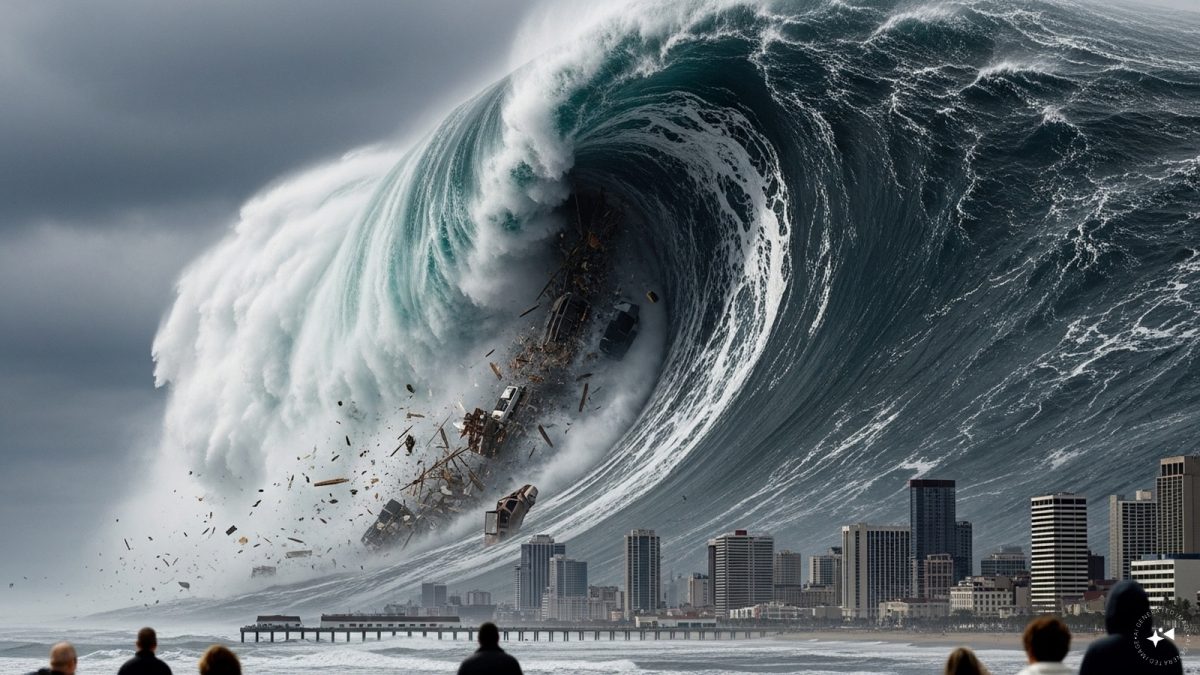As powerful waves battered the coasts of Russia, Japan and Hawaii in July 2025 renewed attention has turned to the destructive history of tsunamis that have struck the United States over the centuries. While tsunamis are often associated with the Pacific Rim, America’s coastlines, especially Hawaii, Alaska, and the West Coast have endured multiple deadly and damaging tsunamis.
Here are 10 tsunamis that have impacted US territories, highlighting the range of natural forces that can generate these massive sea waves.
July 2025 – Hawaii
Hawaii’s Big Island was struck by unusually high and fast-moving waves this month after a deep undersea disturbance in the western Pacific triggered tsunami-like activity. The Pacific Tsunami Warning Center issued alerts, and some coastal areas experienced flooding. While damages were limited, the event underscored Hawaii’s vulnerability due to its central location in the Pacific “Ring of Fire.”
2022 – Tonga eruption, effects in California and Hawaii
The eruption of the Hunga Tonga-Hunga Ha’apai undersea volcano in January 2022 sent shockwaves across the Pacific. Tsunami waves reached as far as California and Hawaii, causing minor flooding in harbors and prompting widespread tsunami warnings. Though relatively mild in the U.S., it served as a reminder that volcanic activity, not just earthquakes, can generate tsunamis.
2011 – Japan earthquake and tsunami, US West Coast impacted
The magnitude 9.0 earthquake off Japan’s northeast coast in March 2011 created a massive tsunami that devastated Japan and reached the U.S. Pacific coast. Harbors in California and Oregon were damaged, and one person was killed in Crescent City, California, while attempting to photograph the incoming waves.
1964 – Prince William Sound, Alaska
One of the most powerful earthquakes ever recorded in North America (magnitude 9.2) struck Alaska’s Prince William Sound in March 1964. The resulting tsunami killed more than 130 people, some as far away as California and Oregon. Valdez and Seward in Alaska were severely damaged.
1960 – Chile earthquake impacts US West Coast
The Great Chilean earthquake—the most powerful ever recorded globally (magnitude 9.5)—generated a tsunami that crossed the Pacific and caused damage in Hawaii, California, and even Japan. In Hawaii, 61 people were killed, and damage ran into millions of dollars.
1946 – Aleutian Islands, Alaska
A magnitude 7.3 earthquake in Alaska’s Aleutian Islands triggered a devastating tsunami that struck Hilo, Hawaii. The waves killed 159 people, mostly in Hawaii, and led to the creation of the Pacific Tsunami Warning Center.
1918 – Puerto Rico (Mona Rift)
A powerful earthquake in the Mona Passage off western Puerto Rico triggered a tsunami that killed at least 116 people. The earthquake, estimated at magnitude 7.3–7.5, caused flooding along the Puerto Rican coast and remains one of the deadliest natural disasters in the island’s history.
1867 – Virgin Islands
A tsunami generated by an earthquake in the Anegada Trough near the Virgin Islands led to destructive waves that flooded coastal areas of St. Thomas and St. Croix. Though the exact magnitude is uncertain, the event revealed seismic vulnerabilities in the Caribbean region.
1700 – Cascadia Subduction Zone
On January 26, 1700, a massive earthquake (estimated magnitude 9.0) along the Cascadia Subduction Zone off the coast of the Pacific Northwest triggered a tsunami that reached Japan hours later. Oral histories from Indigenous communities and Japanese records provided evidence of the event, highlighting the long-term risks to the Oregon, Washington, and Northern California coasts.
900 AD – Puget Sound, Washington
Geological and archaeological evidence suggests a large earthquake and tsunami occurred in the Puget Sound region around 900 AD, likely with a magnitude of 7.5. Studies of coastal sediments, along with Indigenous oral traditions, support the theory of ancient seismic activity in what is now a densely populated area.
America’s tsunami risk: A persistent threat
The U.S. Geological Survey (USGS) and the National Oceanic and Atmospheric Administration (NOAA) continue to monitor and assess tsunami risks to U.S. coastlines. According to the USGS, the most vulnerable areas include Alaska, Hawaii, and the West Coast—especially where tectonic plates converge or where volcanic islands are present.
Modern warning systems, including the Pacific Tsunami Warning Center and West Coast/Alaska Tsunami Warning Center, offer early alerts, but historical evidence shows that not all tsunamis give clear warning signs. Earthquakes, landslides, and volcanic eruptions can all be triggers—some thousands of miles from where the waves ultimately strike.
)